GST Amendment Act: Key Features, Changes & Impact 2025
- 17 Oct 25
- 15 mins
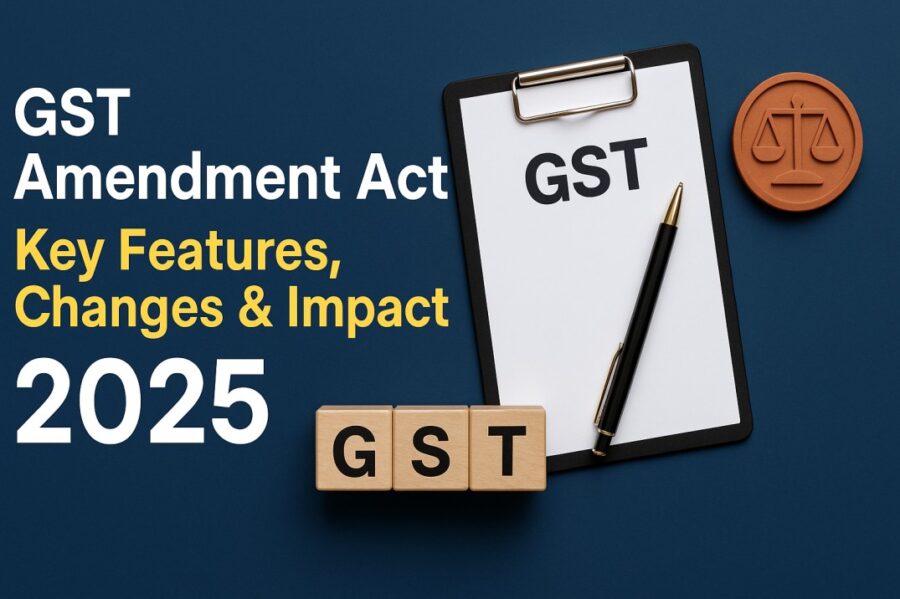
GST Amendment Act: Key Features, Changes & Impact 2025
Key Takeaways
- The 101st Constitutional Amendment Act of 2016 enabled the introduction of GST, empowering both Centre and States to levy taxes.
- The GST Amendment Acts simplify compliance, enhance transparency, and align taxation with India’s evolving digital economy.
- Recent amendments focus on MFA security, ITC reforms, mandatory ISD use, and sector-specific GST rate adjustments.
- These changes promote ease of doing business, improved taxpayer experience, and stronger anti-evasion mechanisms.
- Despite challenges like frequent updates and compliance costs, the GST Amendment Acts drive India toward a unified, tech-driven tax system.
Did you know that GST laws in India have been regularly amended since their introduction? Introduction of GST itself required significant constitutional changes to reshape the country’s indirect tax framework. Due to the country’s diversity, bringing out this change was a challenge.
Thus, in enabling the implementation of a unified tax system by empowering both the Centre and States to levy GST, the GST Amendment Act played a crucial role in redefining taxation powers across levels of government.
This article will inform you about some key features of the Amendment Act, their impact on the state and central government, businesses, and taxpayers, along with benefits and challenges of this amendment across the nation.
Constitutional Amendments that Enabled GST
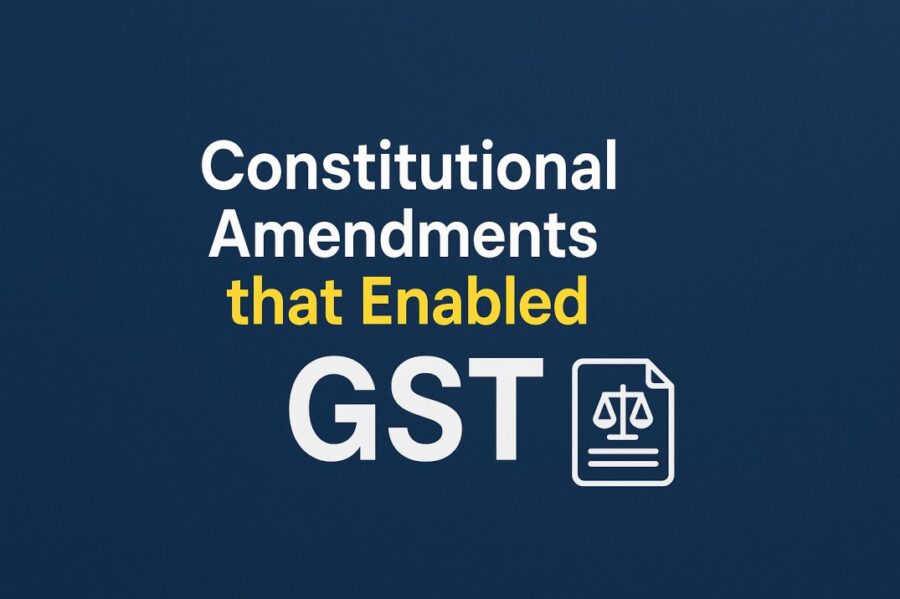
The introduction of GST was through the 101st Constitutional Amendment Act of 2016. With this, the idea was to introduce a dual taxation structure through which both state and centre would be able to levy tax.
GST was a replacement for several other taxation systems, such as service tax, VAT, and duty of excise. Moreover, the GST Council’s creation under Article 279A made it possible to have a collaborative decision-making framework for future amendments under GST Acts.
Key Highlights
Below are some highlights to easily understand the GST Amendment Act that enabled GST:
The 122nd Constitutional Amendment Bill of 2014 was the forerunner to GST.
By integrating various indirect tax regimes into one, the 122nd Constitutional Amendment Bill of 2014 proposed a foundation for a unified tax system, which was GST.
This bill also had provisions to create a Goods and Services Tax (GST) Council, which would help by making recommendations on tax threshold limits, rates, and exemptions.
On 1 July 2017, after parliament’s approval, this bill became the 101st Constitutional Amendment Act of 2016.
Key provisions of the 101st Constitutional Amendment Act of 2016 included:
- Addition of Articles 269A, 279A, and 246A in the Indian Constitution.
| Articles | Definition |
| Article 269A | It has rules for controlling interstate supplies (IGST) taxation. |
| Article 279A | This made the establishment of the GST Council, which acts as a decision-making body for GST laws, possible. |
| Article 246A | It empowers both the State and Parliament to legislate on GST. |
- The 101st Constitutional Amendment Act of 2016 abolished multiple-entry items from state and union lists, which were used in the past to impose indirect taxes.
- The GST framework brought together taxes such as entry tax, VAT, central excise duty, and service tax.
Key Features of GST Amendment Act
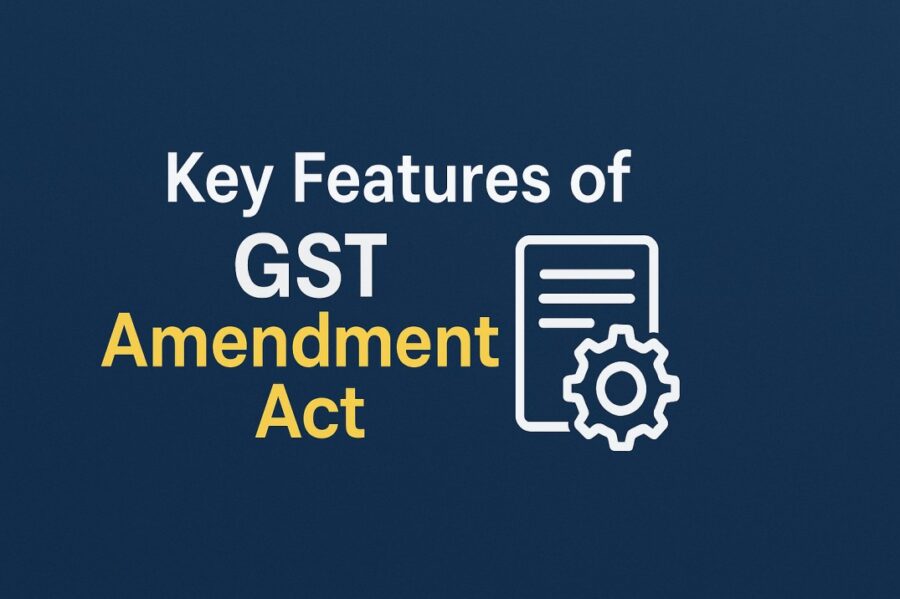
Some key features of the GST Amendment Act are as follows:
- Focus on Simplification
By fine-tuning and revising rules, these amendments focus on making tax filing, refunds, and compliance more user-friendly and faster, aligning with broader GST Reforms initiated by the Government of India.
- Strengthening Enforcement
Stricter overlooking provisions, such as input tax credit (ITC) claims and e-invoicing, curb tax evasion as well as enhance transparency. Online provisions for procedures related to filing taxes made these strict checks possible.
- Dynamic Tax System
Updating an act to adjust to the present economy of a country adds to the dynamic nature of any law. This is what the GST Amendment Act provided. It made sure to include regular updates of provisions to match the current economic activities of the country. Moreover, its focus on taxpayer challenges and technological advancements was also a major point.
- Sector-Specific Reliefs
GST amendments are often made after researching the policy. Moreover, looking into the details of how those amendments will impact different sectors also helps. These amendments include particular provisions for sectors such as export, e-commerce, and MSMEs. These amendments try to address the unique needs of each of these sectors, such as improving vendor payments tracking and easing return processes.
- Government Interests and Balanced Taxpayer
The GST Amendment Act makes sure that compliance is maintained with the advancing economy, technology, and more. Moreover, it also brings relief measures such as simplified reporting systems, reduced late fees, and rationalised penalties. These collectively help optimise revenue collection for the government.
Key Amendments in Recent GST Amendment Act
Recent amendments took effect in India from 1st April 2025. These key amendments are as follows:
- Multi-Factor Authentication (MFA): To access the GST portal, all users will need to implement MFA. This amendment aims to make the portal more secure.
- Mandatory Sequential Filing of GSTR-7: The filing process of GSTR-7, which is for TDS under GST, will require a sequence without skipping any numbers. This change is to enhance TDS system and improve ITC reconciliation.
- Mandatory Input Service Distributor (ISD) Mechanism: The implementation of ISD mechanism for businesses for distributing ITC on services such as professional fees, rent, and advertising will become compulsory.
- GST Rate Adjustments for Hotels: For hotels, the concept of ‘Declared Tariff’ will end, and all restaurant services will be taxed on the actual amount charged to customers at an applicable rate of 18% with ITC benefits.
- GST Rate Adjustments for Used Cars: There is a change in the GST slab for the sale of used cars. It will attract an 18% GST rate as compared to 12% previously. This will impact the ‘used vehicle sales’ business.
- Turnover Calculation and New Invoice Series: The use of new invoice series will be mandatory for businesses, and they will also need to recalculate their aggregate turnover.
- GST Waiver Scheme 2025: Businesses with taxes cleared up to 31st March 2025, can be eligible for a GST waiver under the schemes SPL01 or SPL02. This is to provide relief to compliant taxpayers and encourage timely tax settlement.
- Enhanced Credit Note Compliance: To make sure there are no mismatches in ITC claim recipients of credit notes now need to reject or accept them through the Integrated Management System (IMS).
- Changes in Mandatory Registration of GST: The applicants need to undergo photo capturing and biometric verification at a GST Suvidha Kendra (GSK). For the Primary Authorised Signatory, they will also need document verification.
Each of these changes was aligned with evolving business practices and the government's push toward better direct tax compliance integration through technological upgrades.
Central Goods and Services Tax (Amendment) Bill, 2023
The CGST (Amendment) Bill, 2023, brought several operational and procedural changes to improve business compliances and simplify GST processes. The bill introduced the following key measures:
- Simplified ITC Rules: Lawmakers were focusing on rationalising ITC provisions to avoid mismatches and disputes.
- Improved Taxpayer Compliance: Authorities came up with changes to streamline monthly and annual return filing and make the process more user-friendly.
- Clarified Tax Exemptions and Rates: The bill made changes addressing the ambiguities in tax rate applications to reduce legal disputes.
- Strengthened Anti-Evasion Measures: Enhancement of provisions to curb fraud and promote accurate tax reporting was done by authorised officers.
- Focused on Small Taxpayers and MSMEs: For small taxpayers and MSMEs, relief came from lower compliance costs set by the policymakers.
These reforms support smoother vendor payments tracking and reduce the risk of disputes and legal consequences arising from ambiguous compliance rules.
How GST Amendment Acts Are Implemented
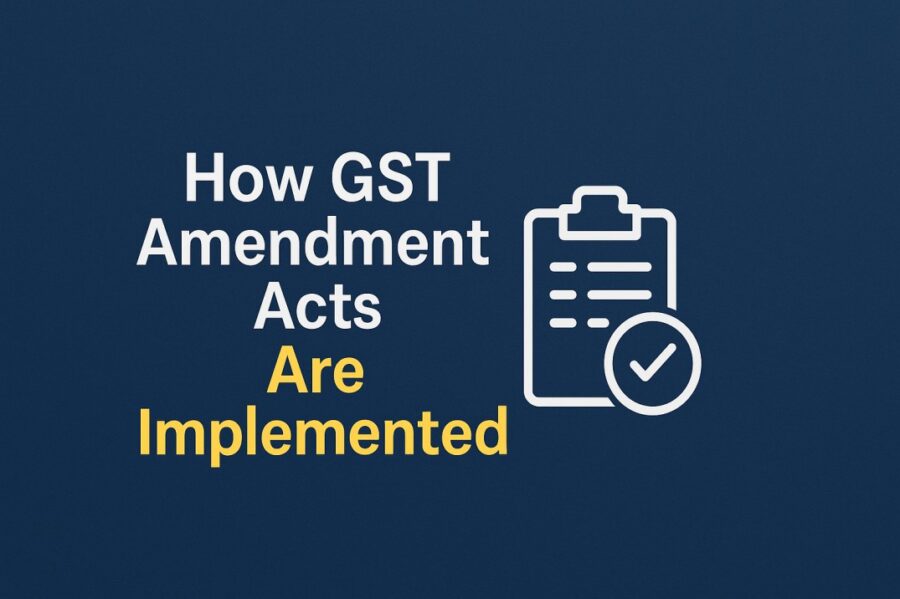
The implementation of the GST Amendment Act is done by following these steps:
- Recommendations by GST Council
The GST Council evaluates and analyses the need to integrate a change in the GST policy. This is done on the basis of several aspects such as a country's economic conditions, technological advantages, and more. Moreover, to integrate changes in the policy of an industry, an analysis of its revenue and taxpayer data is done, and industry’s feedback is taken.
- Drafting an Amendment
After the GST council recommends a change in any specific industry or part of the GST regime, it is the Ministry of Finance’s job to draft an amendment.
- Legislative Approval
The GST council introduces this GST amendment plan in Parliament or respective State Legislature. This is done so they can debate these proposed changes in detail, reviewing their potential impact on taxpayers and revenue. After thorough discussions, both Houses vote to approve the amendment.
- Presidential Assent
Once the legislature passes this amendment, the bill goes to the President of India. The president reviews it and gives formal approval. Only after receiving this approval does the amendment officially become part of the law.
- Rules and Notifications
After legal approval, the government issues official circulars, FAQs, and notifications to explain how these new changes will apply. This information helps taxpayers, businesses, and professionals understand the scope, procedures, and compliance requirements that came with the amendment.
- Operational and Technical Updates
To support smooth execution of the amended rules, authorities update the GST portal. This is a very important step as it ensures that the portal reflects the law and functions without disruptions. They revise forms, format invoice generation, adjust ITC matching, and more as per requirement.
- Industry Outreach
Government departments organise workshops and awareness drives to inform businesses and tax professionals about the amendment. This offers them practical guidance and helps them to adapt to the changes with minimal confusion.
- Periodic Reviews
After implementing the GST amendment, authorities need to continuously monitor its effectiveness. They do this by analysing feedback, studying compliance trends, and assessing any challenges faced by taxpayers. On the basis of this evaluation, they might issue clarifications or propose further changes to improve the law’s impact and ease of compliance.
Impact of GST Amendments
The impact of any GST Amendment Act is primarily on three groups, which are the government, businesses, and taxpayers. These impacts can either be positive or negative. All of the positive and negative impacts of the GST amendments on these three groups are as follows:
Impact on Government
Positive impacts of GST amendments on the government:
- All amendments in the GST regime aim to improve tax compliance. Thus, the government collects more revenue due to improved compliance and reduced tax evasion.
- Improved revenue collection, better compliance, and more transparency.
- Transparency aspect of tax filing and other GST-related services increases. This happens due to the use of tools such as e-invoicing and Aadhaar-based registration.
Negative impacts of GST amendments on the government:
- Government needs to manage the initial cost of updating its IT infrastructure and conducting taxpayer awareness programs. These costs can be higher initially, but in long term, they prove to be very cost-effective.
- Implementation challenges may delay processes or cause confusion.
Impact on Businesses
Positive impacts of GST amendments on businesses:
- Due to the GST Amendment Act, multiple businesses, whether it is small-scale or large-scale businesses, enjoy the benefits of simpler compliance procedures such as rationalised late fees and enhanced ITC rules.
- They benefit from the reduction in percentage of GST from previous tax rates and composition schemes.
Negative impacts of GST amendments on businesses:
- The amendments are frequent, which can disrupt the flow of a business. They also need to constantly adapt to these frequent amendments, which increases their compliance costs.
- Smaller businesses may face difficulties in meeting technological demands due to their tight budget. An example of these demands can be e-invoicing.
Impact on Taxpayers
Positive impacts of GST amendments on taxpayers:
- As compared to businesses and the government, the taxpayers face fewer issues or difficulties in adapting to the amendments. This provides them with smoother refunds as rules become clearer with each amendment.
- They also experience reduced compliance burdens as the taxation process becomes more streamlined.
Negative impacts of GST amendments on taxpayers:
- The taxpayers are not always clear regarding the exact changes, and confusion might still be there. This can lead to them facing financial strain due to penalties for non-compliance.
- Confusion due to lack of awareness, risk of legal consequences from unintentional non-compliance. This can happen if they miss benefits that are designed to help them lower their liable taxes.
Benefits of GST Amendments
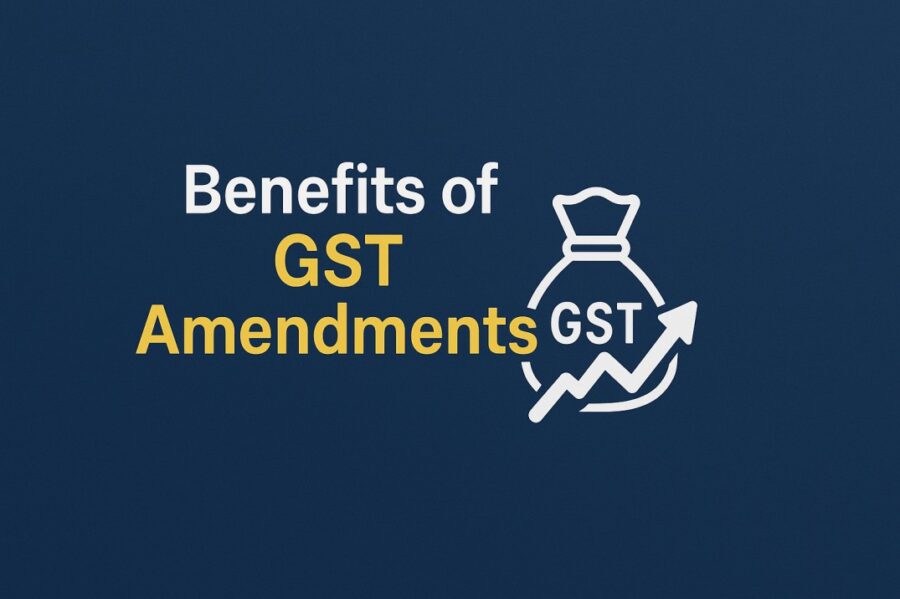
The multiple benefits of GST amendments are as follows:
- Increased Transparency: With the introduction of measures such as ITC matching and e-invoicing, the ability to trace transactions of the government has improved. This helps them in reducing tax fraud.
- Simplified Compliance: With regular updates that the authorities implement, the transfer of knowledge regarding the amendments makes them common. This helps streamline filing, reducing disputes, and making compliance easier for smaller businesses.
- Revenue Optimisation: The increased tax filing and the reduced number of tax evaders result in more tax revenue. The government boosts tax collection efficiency through better compliance, enabling more developmental funding.
- Encouraging Formalisation: Amendments in GST motivate businesses to shift from the informal to the formal economy.
Why are Amendments Necessary for Indian Government?
The reasons why GST amendments are necessary for the Indian government are as follows
- Address Gaps: Authorities observe and close loopholes that any taxpayer might use or have used for tax evasion.
- Stay Dynamic: With the amendments, they try to respond to evolving economic conditions, technology, and taxpayer needs.
- Promote Growth: A strong GST framework builds investor confidence in the Indian economy, as a result of which economic expansion happens.
Challenges Posed by GST Amendments
The challenges of any GST Amendment Act are primarily on three groups, which are the government, businesses, and taxpayers. These challenges of the GST amendments are as follows:
Challenges for Government
- With each GST Amendment Act, the government needs to invest heavily in system upgrades such as the GST portal. These technological needs present a significant challenge with frequent amendments.
- Similar to the technological need that can cost the government highly, conducting awareness programmes also becomes continuous, which can again increase costs.
Challenges for Businesses
- Businesses regularly need to invest in new software or updates in their technological system, as well as it needs to train their employees and financial team to keep up with regular updates.
- Businesses in rural areas or smaller enterprises struggle with e-invoicing and online filings due to improper technological advancement in those areas.
Challenges for Taxpayers
- Taxpayers often experience uncertainty and confusion due to frequent and inconsistent changes.
- Unawareness among taxpayers regarding new provisions results in mistakes and penalties.
Conclusion
The GST Amendment Act transformed India’s tax landscape by establishing a unified and transparent system. Through constitutional changes, it empowered an online model of taxation and streamlined the collection and distribution of revenue.
Therefore, as a stakeholder, business owner, or taxpayer, understanding these amendments can help them to appreciate the structural shift. It also helps in understanding long-term benefits of GST introduced to India’s economic and governance systems, and ensures better direct tax compliance and awareness of legal consequences under the amended GST Acts.
💡If you want to streamline your payment and make GST payments via credit, debit card or UPI, consider using the PICE App. Explore the PICE App today and take your business to new heights.
FAQs
What is the GST Amendment Act and why was it introduced?
What were the key constitutional provisions introduced under the 101st Amendment Act?
Article 246A empowers both the Parliament and State Legislatures to levy GST.
Article 269A governs the levy of IGST on inter-state supplies.
Article 279A provides for the creation of the GST Council, responsible for decision-making on tax rates, exemptions, and reforms.
These provisions collectively laid the foundation for India’s unified tax structure.
 By
By 















